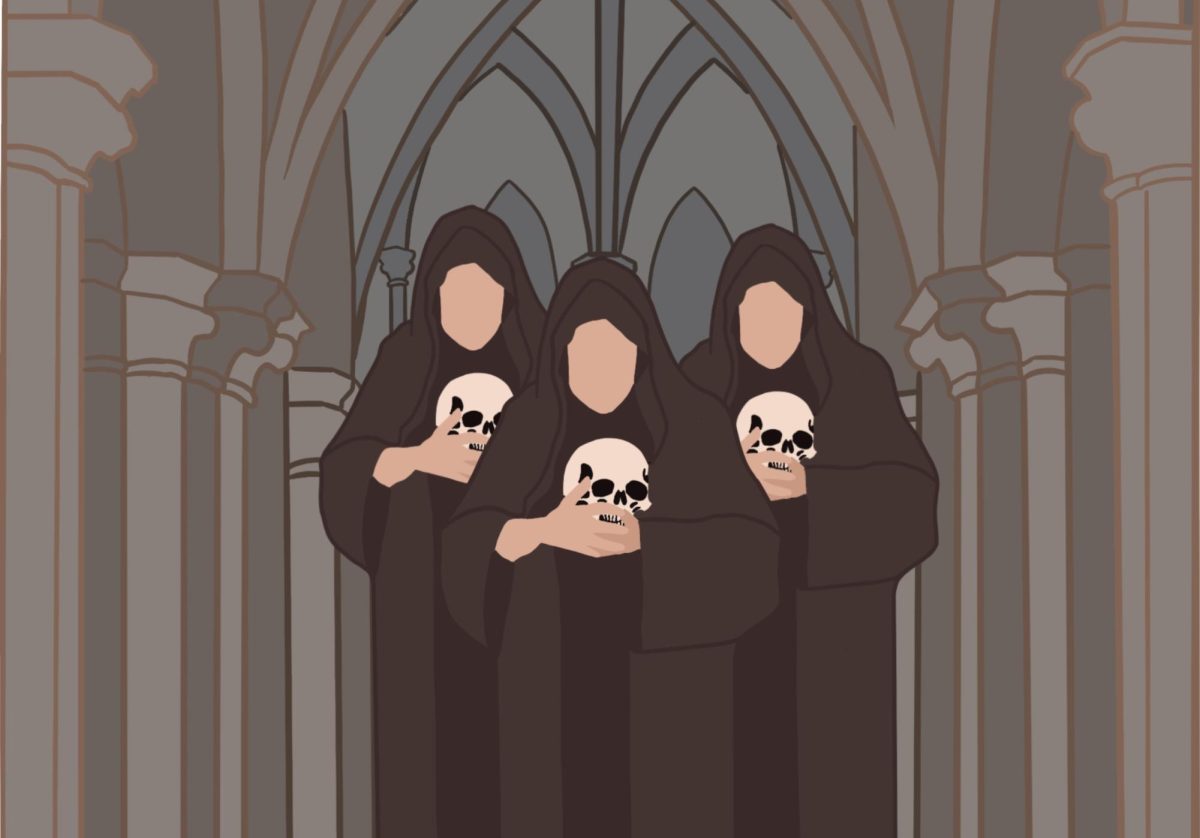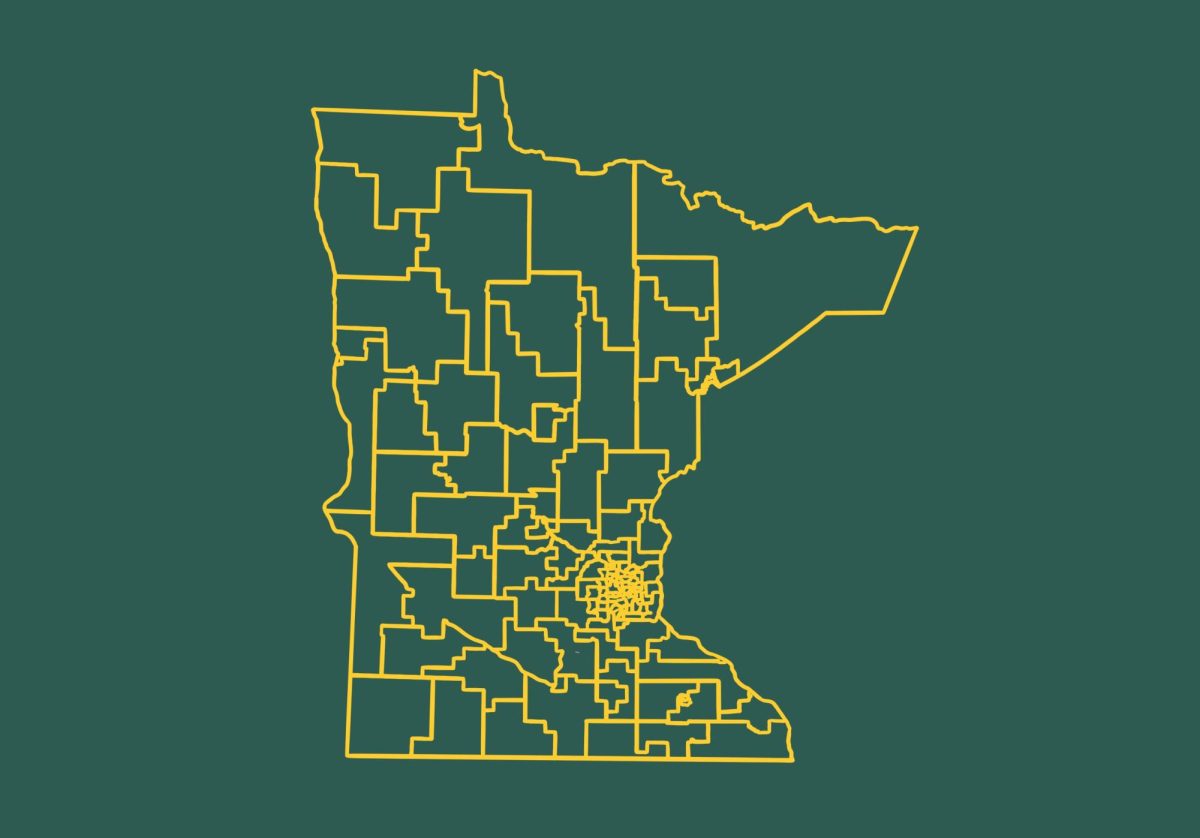Part three in a series by University of Minnesota Professor Ian Maitland.
One of the reasons the building names task force gave for its recommendation that former Dean of Student Affairs Edward Nicholson’s name be stripped from Nicholson Hall is that he was part of a conspiracy on the campus. The task force makes the sensational claim that “[d]uring the 1930s, [Dean of Student Affairs, Edward Nicholson (aka “Dean Nick”)], monitored student activists and reported their names and alleged actions to his political allies at the state and national levels.” Among those who are supposed to have received Nicholson’s information were prominent Republican politician Ray P. Chase, the FBI, and, most shocking of all, “open allies of Nazi Germany.” The report painted Nicholson in even darker shades of malevolence by charging that his surveillance had “targeted” Jewish and Black students.
The story isn’t exactly new. Four decades earlier, late UMN History Professor Hyman Berman reported that archives which Chase left with the Minnesota Historical Society (MNHS) contained “voluminous reports on ‘Jew reds’” on campus that Chase had received from Nicholson, according to an article Berman wrote titled “Political Antisemitism in Minnesota during the Great Depression.” Berman didn’t actually employ the term “surveillance” to describe Nicholson’s activities. But recently, professor Riv-Ellen Prell revived Berman’s charge in her “A Campus Divided” exhibition. In her account, Berman’s allegation that Nicholson provided reports about campus radicals to Chase mushrooms into something even bigger. Prell charges that “[t]ogether, Ray Chase … and Dean Edward Nicholson contributed to creating the University of Minnesota as a POLITICAL SURVEILLANCE CAMPUS, where monitoring of students became the norm” (emphasis in original text).
The choice of the word “surveillance” was not accidental. It implies systematic monitoring, probably surreptitious or clandestine. It is a term typically used in counterintelligence or in relation to crime suspects. The task force report charges that Nicholson “collaborated with … Ray Chase to identify groups and individual students as potentially dangerous based on their political leanings.”
The scale of the surveillance conducted by Nicholson must have been considerable, if the task force report and other accounts are to be believed. The report says that “Nicholson played a major role in providing Chase with detailed information about ‘Jew Reds’ at the University.” Similarly, Berman’s article claims that Chase “received voluminous reports” from Nicholson. Finally, in “A Campus Divided,” Prell says that “[i]nformation about left-wing student activism flowed from Nicholson to Chase,” including “not only … the names of dozens of student activists, but their on-campus activities and the political organizations they joined and led. These lists remain in Chase’s papers, which are housed at the Minnesota Historical Society.”
The task force report assures us that its account of Nicholson’s actions is based on an “[e]xamination of archival material.” So, in order to fact-check its claims, I scoured the task force report’s sources for the archival material that supposedly supports the claim about a conspiracy between Nicholson and Chase to conduct surveillance of left-wing students on campus.
What did my search yield? It netted a grand total of two letters (with attachments) from Nicholson to Chase. Both letters are reproduced on the “A Campus Divided” website along with a copy of an FBI report stating that Nicholson had identified the leader of the local chapter of the American Students Union (ASU).
Based on my research, these two letters are the only archival material cited in either the task force report or “A Campus Divided” that show Nicholson sharing student or faculty names with Chase. There is no doubt that the first list is of left-wing faculty members (two of them, Profs. Benjamin Lippincott and Joseph Beach, had previously been accused of communist activity by Minnesota state Senator J. V. Weber).
As for the two (or three) students, Nicholson seems to have passed their names on because, as he says to Chase, they resembled another student “whom you have on your list.” Based on that, it seems safe to infer that Chase asked Nicholson to review a list of students for accuracy or completeness. From an April 7 letter, it appears that Nicholson returned the (corrected?) version to Chase together with a clipping from the Minnesota Daily.
The letters are hardly in accordance with the task force’s depiction of Nicholson as a master spy. It is not just how few names there are — eight faculty and three students, not “voluminous reports.” Another thing is that none of the information looks like the products of surveillance. It seems improbable that any sentient being on campus was unaware that Profs. Lippincott and Beach had been called out for being communists by Senator Weber. So Nicholson did not need a spy ring to tell him that they were “suspects.” It is just as improbable that the identity of the leader of the campus chapter of a major national student organization like the ASU was a secret that only snooping could ferret out. In the case of one of the students whose name Nicholson passed on to Chase, Nicholson told Chase that his source was an FBI agent. One of the pieces of information Nicholson passed to Chase was a clipping from the Minnesota Daily. My point is that it did not take surveillance of campus radicals to compile this sort of information.
Notice too the date of the correspondence — it is 1941. But the task force alleges that Nicholson conducted his surveillance of student radicals “[d]uring the 1930s.” According to my research, neither the task force report nor “A Campus Divided” cite any dossiers or lists from Nicholson in Chase’s files from the 1930s. By 1941, a time of wars and rumors of wars, the outlook for peace had grown far darker. It is probably no coincidence that only a few months earlier, in the fall of 1940, the FBI had begun an extensive investigation of the student movement and the ASU in particular. “Since the ASU in 1940 was an anti-interventionist, communist-led organization, the FBI deemed it necessary to gather intelligence on the ASU’s strength, anti-war agitation, and potential resistance to the recently adopted conscription act,” according to “When the Old Left Was Young: Student Radicals and America’s First Mass Student Movement” by Robert Cohen. My hunch is that Chase — an ardent anti-communist — was pressing his friends for leads that he might share with the FBI. Finally, notice that in neither of his letters does Nicholson refer to “Jew reds” or “Jew agitators.”
None of this is to deny that Chase’s files contained materials from the campus. There are collections of communist or socialist flyers that were apparently picked up on the campus grounds, reports on public meetings of radical organizations like the Social Problems Club and the Socialist (Workers) Party and some lists of students who (presumably) were radicals. For example, the files contain a list of names of 25 students who participated in a 1934 Peace Demonstration on campus.
The catch is that, apart from the two letters I mentioned, nothing in Chase’s files ties these materials to Nicholson, according to my research. The task force seems to have blindly followed Prell and Berman in treating anything emanating from the campus as the handiwork of Nicholson — all without even the slightest pretense of a justification.
The question naturally follows: If Nicholson wasn’t Chase’s source, then who was? To answer that question, I need to say a few more words about Chase. Ray P. Chase was a high-profile opponent of Farmer-Labor governor Elmer Benson. He was also a former U.S. congressman who had his eye on a U.S. Senate seat. And he was an outspoken critic of what he saw as communist infiltration of the Farmer-Labor Party. As a result, he was a natural rallying point for many Minnesotans who saw communism as a mortal threat to the United States. That is the most plausible explanation of how Chase’s files came to hold voluminous reports about suspicious activity both on-campus and (keep in mind) off-campus.
The upshot is that it is highly likely that Chase had a network of freelance informants — “spies” if you prefer the term, though they would doubtless have called themselves concerned citizens or patriots. I am saying that Chase would not have needed Nicholson to go around collecting radical leaflets on campus for him. By virtue of his visibility and anti-communism, Chase would have been a magnet for such information. (True, it might be retorted that Nicholson employed his own spy network, but in the absence of any evidence, that would be to pile unsupported speculation on top of unsupported speculation.)
Another puzzling aspect of these events is why a national political figure like Chase would show an interest in the activities of student radicals on the University’s campus. It all seems so disproportionate. But that overlooks the extent to which the Communist Party had penetrated American campuses at the time. As Robert Cohen says in “When the Old Left Was Young,” “Communists achieved a degree of influence in American student politics far superior to their meager impact on the larger national polity. Not even in the labor movement where communists had an impressive presence during the 1930s, could communist influence compare with what it was in the student movement.” So Chase’s interest was not completely irrational.
To recap, it does not follow from the fact that Chase’s files contain reports on the activities of student radicals that the source of those reports must have been the Dean of Student Affairs. It is far more plausible that the reports were passed on by possibly numerous volunteers both on and off-campus. (For example, it is documented that those volunteers included the officer in charge of the ROTC and some of its student members.)
The most important case of a document in the Chase archive that has been falsely attributed to Nicholson is the notorious “Notes on Radicalism at the University of Minnesota.” (It was the subject of an earlier letter I wrote to the Minnesota Daily. You can find a copy of the “Notes on Radicalism” on the “A Campus Divided” website.
“Notes on Radicalism” appears to have been created in 1939. It comprises short biographical notes on six former students who had, in their times, been leading radical activists on the University campus. It also contains information on several leftist political organizations. This document seems to have been the basis for repeated charges that Nicholson was an anti-Semite. If there is a smoking gun, this is it.
The task force report implies that Nicholson was the author of “Notes on Radicalism.” Berman also attributes it to Nicholson. Prell equivocates. At one place she says it was created by Chase “based on information provided to him” by Nicholson. But at another point she states that “Nicholson and Chase” called Sherman Dryer a “Jew. Communist. Agitator and publicist.” That is a direct quotation from the “Notes on Radicalism.” She can’t have it both ways.
The case is overwhelming, however, that “Notes on Radicalism” was not authored by Nicholson. The document was found in Chase’s files, not Nicholson’s. It bears no markings indicating that Nicholson might be its author. It contains a handwritten spelling correction that does not in the least resemble Nicholson’s handwriting. (Compare it with Nicholson’s handwriting here.)
And, despite the fact that its subject matter is former student radicals and left-wing organizations, most of the information in it relates to off-campus matters. The contents are not the product of any imagined clandestine campus surveillance, nor is there any reason to think that Nicholson would otherwise have been advantageously placed to collect such information. The tone and tenor of the document are quite different from the style of Nicholson’s other correspondence with Chase. Also its content — notably its attention to detail — comports better with what we know about Chase, who was a compulsive gatherer of intelligence and who could not let go of the tiniest scrap of information (witness the 44 boxes of documents at the MNHS).
Recall that the task force’s theory is that, “[d]uring the 1930s, Nicholson monitored student activists and reported their names and alleged actions to his political allies at the state and national levels.” That theory rests almost entirely on the unsubstantiated assumption that Nicholson was the source of the reports on campus radicals in Chase’s files like the “Notes on Radicalism.” But if the task force’s attempt to pin the “Notes on Radicalism” on Nicholson fails (as it must), there is even less reason to trust its claim that Nicholson must have been the source of the other information about campus radicals.
None of Nicholson’s confirmed correspondence with Chase, nor the “Notes on Radicalism,” nor the other reports in Chase’s files support the theory that Nicholson collaborated with Chase in spying on radical students. The only “surveillance” that Nicholson likely conducted on campus was from the window of his office. Without stronger evidence — or really any evidence at all — the task force’s story is just a conspiracy theory conjured out of thin air. The task force report has blackened Nicholson’s reputation with unsupported accusations like this one and with its grotesque charges that he was an anti-Semite and shared information about students with “open allies of Nazi Germany.”
I renew my call for the building names task force to do the right thing and give Nicholson his good name back. But it is not just Dean Nick. The University’s reputation has been tarnished by these unfair accusations. That shadow should be lifted too.
Ian Maitland is a professor at the University of Minnesota’s Carlson School of Management.
This letter to the editor has been lightly edited for style and clarity.








